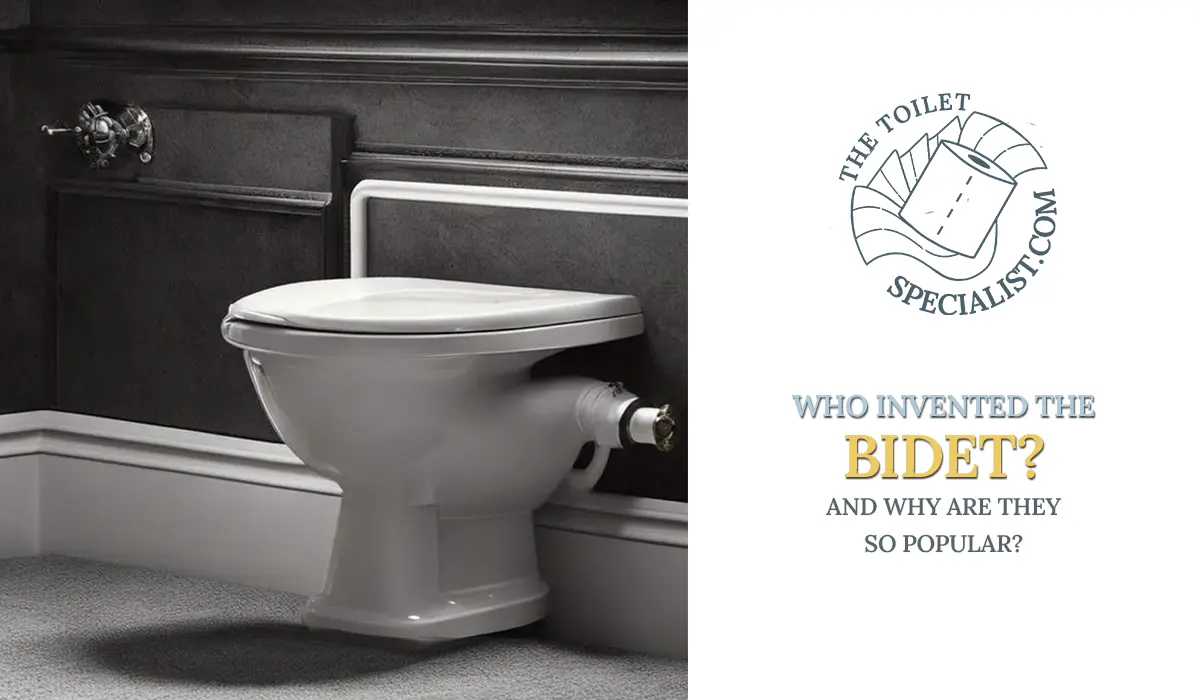Throughout history, mankind’s pursuit of improvement has brought numerous indispensable tools. Among these, though less glorified, is the unassuming bidet.
The term “bidet” originates from the French word meaning “to trot” or “pony,” referring to the position users adopt while using it. This simple device holds a captivating history, reflecting our cultural development and dedication to personal cleanliness. Associated predominantly with French culture, the bidet’s legacy spans various historical eras and geographical regions.
Keep reading to find out the history of this handy fixture!
Origins of the Bidet
Have you ever stopped to contemplate the origins of some of our most everyday items? One such item undoubtedly sparking curiosity is the handy bidet. There are tons out there to chose from. Such as this hugely popular attachable one.
Known for its integral role in personal hygiene, the bidet’s profound influence becomes apparent when investigating its origin story. So, let’s saddle up and venture back in time to discover the bidet’s beginnings.
The genesis of the bidet can be traced back to France during the late 17th century. It was initially introduced as a washing basin for the aristocracy, intended to maintain their high hygiene standards. The original bidets were not an installed restroom fixture; instead, they were mobile ceramic bowls, rather similar to our present-day bathtubs, that could be easily transported for convenience.
The original purpose of the bidet did not center around cleanliness following restroom use, as one might naturally assume. Instead, it served as an instrument to enhance personal hygiene between bath times. In an era when bathing was not a daily indulgence, the bidet offered a practical solution for maintaining cleanliness. Particularly in private areas.
What country invented the bidet?
While the bidet began as a French novel invention, it was rapidly adopted in other parts of Europe. Specifically, it developed substantial recognition and acceptance in Italy. Although it took till the 20th century for the bidet to infiltrate the United States market, today its use is gaining significant appeal for its sustainability and sanitation advantages.
Fast-forward to present times, the traditional ceramic bidet has evolved considerably. Modern bidets are often built-in with the toilet seat or come as spray attachments. The motivation behind the bidet, though, continues to be rooted in cleanliness and personal hygiene.
Having explored the bidet’s intriguing origins and initial purpose, it becomes clear why this fixture remains an indispensable part of bathrooms worldwide. Not only does the bidet reflect an ancient commitment to cleanliness, but it is also a testament to adaptability, continually evolving to meet the ever-changing needs of hygiene.

Inventor of the Bidet
Throughout this evolution journey of the bidet, it’s interesting to note that no one individual is specifically credited for the invention of the bidet. The device surfaced out of societal necessity rather than an individual’s flash of genius. It’s believed that the bidet was a natural progression from the common washing basins used during the 17th century. These basins evolved, taking inspiration from riding horses, a popular activity of the class that originally used bidets – the French aristocracy.
As for the motivations behind the invention of the bidet, it centers around personal hygiene and comfort. The emphasis on cleanliness was especially true for the aristocracy in France, as they were keen on maintaining high standards of personal hygiene. The bidet provided a way to clean themselves without having to undergo the rather laborious process of a full bath.

Originally, these bidets were used in bedrooms, not in bathrooms. Ladies of the French court prized these contraptions for their comfort and convenience. It created a whole new standard for personal hygiene, which at that era, was notably revolutionary.
The bidet was seen as a luxury product for centuries, available only to high-class, affluent societies. Over time the bidet’s reputation changed, from being a symbol of wealth and luxury to an essential bathroom fixture that promotes cleanliness. This was particularly aided by advancements in plumbing technology, which allowed bidets to be built into bathrooms, further promoting their adoption.
In Italy, the shift took place in the mid-20th century when the government made it compulsory for all homes to have a bidet. Italian building regulations from 1975 even defined sanitary requirements and required every residential bathroom to be equipped with a bidet.
Is the bidet French or Japanese?
The bidet’s origins are often debated, with both French and Japanese cultures claiming its invention. Historically, bidet-like devices have been traced back to ancient civilizations, including those in ancient Egypt and Rome. Meanwhile, in Japan, electronic bidet seats, known as washlets, have gained widespread use since their introduction in the 1980s.
While the debate over its origin persists, the bidet’s global popularity speaks to its universal appeal and functionality.
Using a bidet today
In today’s world, bidets are recognized as an environmentally friendly and efficient way of cleaning oneself. They significantly reduce the use of toilet paper, contributing towards a sustainable lifestyle. Additionally, bidets offer a level of comfort and hygiene that is challenging to achieve with conventional cleaning methods.
Read here all about the benefits of the bidet.
With continuing advancements and adaptations, the bidet’s initial driving principle – to promote hygiene and cleanliness, prevails today, still striking a chord with people worldwide. This humble bathroom fixture, whose beginnings rest in the noble chambers of the French aristocracy, continues to redefine our understanding of personal cleanliness, stepping bravely into the future, geared and ready to face bathroom demands and challenges head-on.

Disclaimer: TheToiletSpecialist.com is not responsible for any damage caused to your toilet and surroundings by (wrongly) interpreting information found on this site. Please seek custom advice from a professional to evaluate your current situation.
This article may contain affiliate links at no extra cost to you. AF links help support this blog so that it can exist and expand for years to come!





